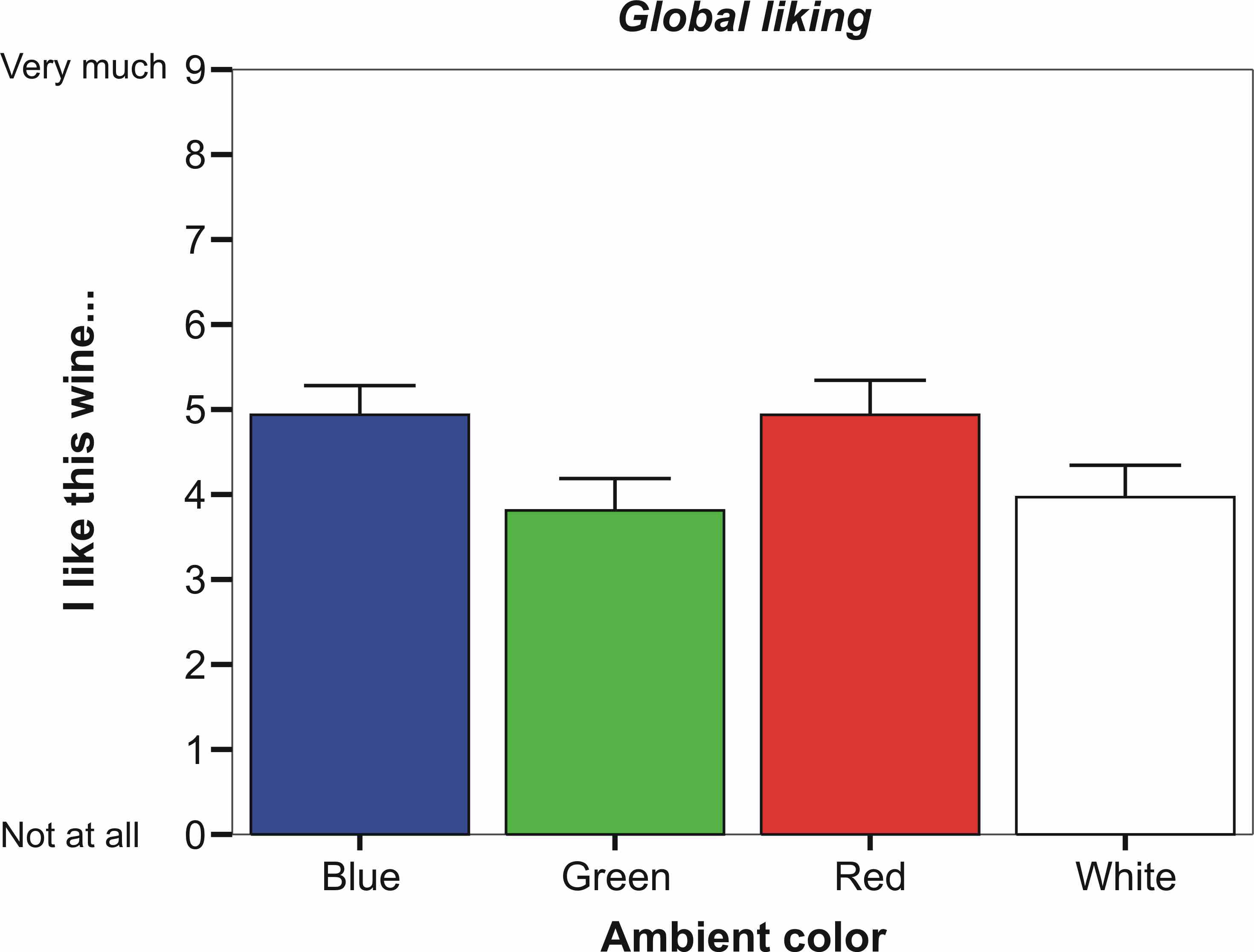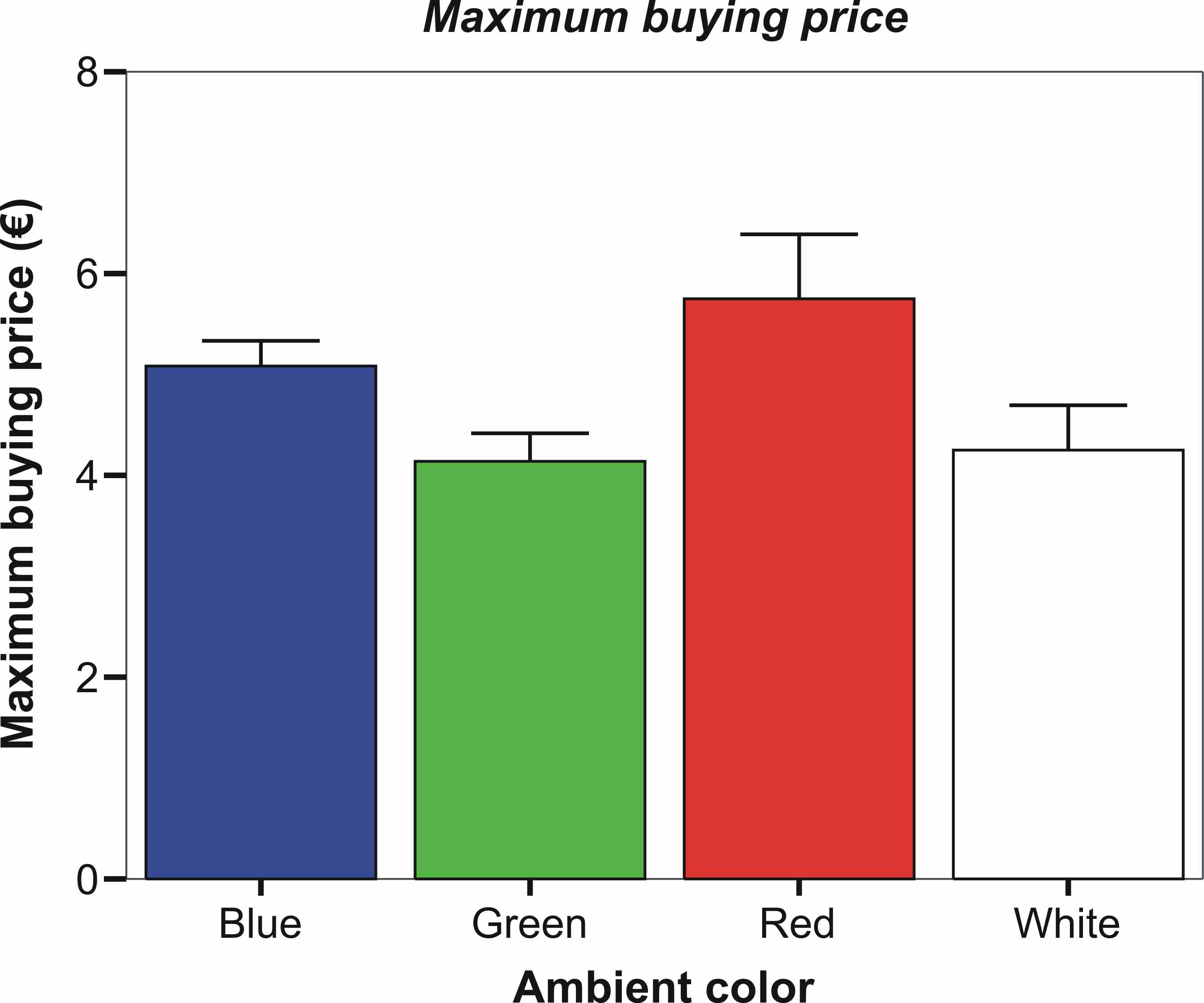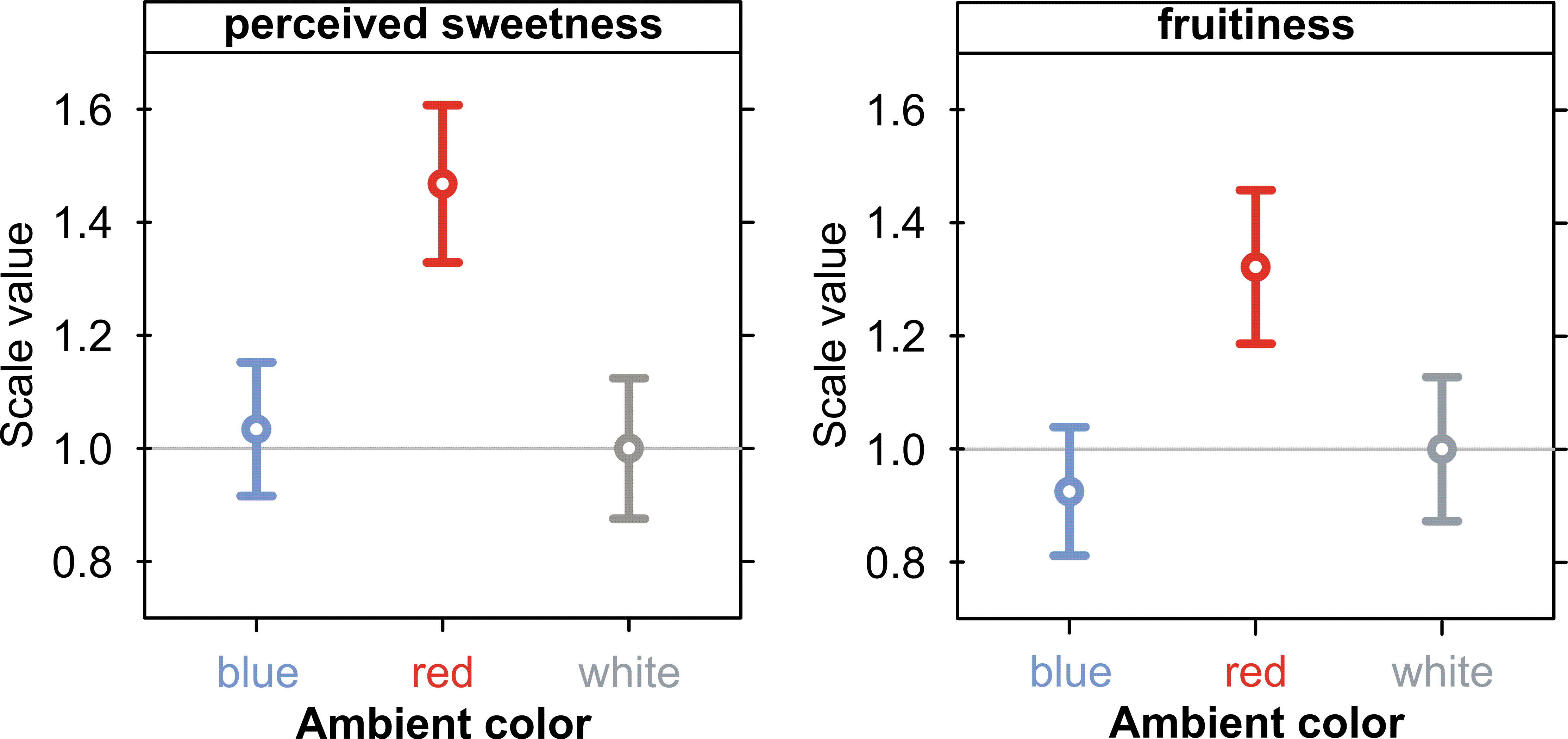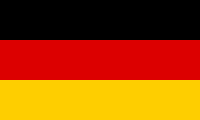It is a well known
phenomenon that the color of a
drink has an influence on its taste. This influence is so strong that
even experts believe to identify red wine aromas in a white wine
colored red with odorless food coloring (Morrot, Brochet, &
Dubourdieu, 2001, Brain and Language).
Does this interaction
between color and aroma generalize to an effect of ambient color? Does
maybe the illumination of a restaurant lead the customers to praise the
served food?
We
sought to answer this question by studying the effect of ambient
lighting on the taste of wine. The study was done in cooperation with
the winery Fritz Allendorf (Rheingau,
Germany).
The results were published in the Journal
of Sensory Studies:
Oberfeld, D.,
Hecht, H., Allendorf, U., & Wickelmaier, F. (2009).
Ambient lighting modifies the flavor of wine.
Journal of
Sensory Studies, 24(6), 797-832 . [PDF] [Abstract]
Interested in
our results? Then read on…
Experiment 1:
Wine-tasting in colored ambient light at the winery
In order to avoid
an influence of the
ambient light on color of the wine, we served dry white wine (Riesling)
in black glasses in which the color of the wine was not visible.
Visitors of the Allendorf winery participated in the experiment. Each
subject tasted the wine under only a single light-color (blue, red, white or green light;
between-subjects design) in a specially designed color room.
We then asked the subjects to fill in a questionnaire about the taste
of the wine. They had to...
.... evaluate the aroma regarding fruitiness, acidity, spiciness,
sweetness and
bitterness on a scale from 1 (low) to 10 (very
high)
... assess the intensity of the
aroma and its stability
... evaluate the overall impression
("I don´t like this drink at all" ... "I like it very much")
... specify the maximum price they
would spend for a bottle of the wine just sampled
Results
Experiment 1
- We found a statistically significant effect of
the ambient color on global
liking: the subjects reported to like the wine better when
tasted in red or blue light
rather than in green
or white light.

- The subjects were also willing to spend over 1 Euro more on
a bottle of the same Riesling when they tasted it in red light compared to when
they tasted it in green
light.

Contrary to our expectations, ambient color had no
influence on aroma dimensions such as fruitiness or sweetness, nor on
the intensity or stability of the taste.
This means that ambient
light color has a greater influence on the overall impression
of a sampled wine than on the components of its taste. To review these
surprising results we did another experiment with some modifications.
Experiment
2
Labaratory experiment with wine tasting in several ambient colors
In Experiment 2
each subject tasted two different wines in each of the four light
colors (within-subject design).
We
expected this method to be more sensitive to changes in aroma caused by
ambient lighting, because the subjects directly experience the change
in color.
In addition, we wanted to find out if the more
positive evaluation of the wine found in some conditions in Experiment
1 was caused by a positive or agreeable
emotional state possibly
induced by some light colors. Therefore we asked the subjects to
evaluate their current emotional state in each light color setting.
Results
Experiment 2
This time, ambient
color had a clear effect on the aroma of the wine.
- In blue
and green
light, the wine tasted spicier
than in white light
- Blue
light made the wine taste more bitter
Surprisingly, in this experiment the overall assessment
of the wine was not significantly influenced by ambient color.
Nevertheless,
only 19% of the subjects could tell correctly that they had tasted only
two different wines in the course of the experiment. 56% believed to
have sampled more than two wines. As in earlier studies, the subjects judged the blue light to
be the most agreeable,
followed by red, green and
finally white light.
However, we did not observe a clear relation between the emotional
evaluation of the light-color and the liking of the wine.
Experiment
3:
Direct comparison between two glasses of the same wine,
tasted in two different ambient colors
In this
experiment, we used a method more sensitive to small changes in aroma
due to changes in ambient lighting.
The
task was easier this time: each subject tasted two glasses of the same
wine one after another. The first glass was presented in a different
ambient color than the second glass. The participant decided which wine
had tasted better, sweeter and fruitier. From this data the average
perceived sweetness of the wine in relation to the light color was
calculated, using a special statistical method.
We found that the same wine tasted 50% sweeter when tasted
in red light than
when tasted in blue
or white light.
Similarly, in red
light the perceived fruitiness
was highest. The overall
assessment („Which wine tasted best?“) was once again not
influenced by the light color.

Conclusion
Ambient lighting
influences how wine
tastes, even when it has no effect on the color of the wine in the
glass. Our results show that the context
has a stronger influence on the taste perception than formerly
believed. These findings can be relevant for the architectural designing
of restaurants and wine shops.
How can the effects of ambient color be explained?
The
simple hypothesis that whenever a certain light color makes a person
feel comfortable he or she likes the wine better could not be affirmed.
The emotions elicited by a certain light color do not seem to be the
cause of the effects.
An alternative explanation could be an influence of color on cognition,
for example by making us more accessible and responsive for a certain
taste. Likewise, associations could play a role, e.g. „green
= immature“.
An answer to these questions will have to be found in future
experiments!
Media
coverage of our results
- German Television
- German Radio
- Werners Weinwelt, SWR4, 5.12.2009
- Newspapers - Our results were mentioned in
quite a few national and international newspapers, for example:
|












 Diese Seite auf Deutsch: Effekt der
Umgebungsfarbe auf Geruch und Geschmack von Wein
Diese Seite auf Deutsch: Effekt der
Umgebungsfarbe auf Geruch und Geschmack von Wein